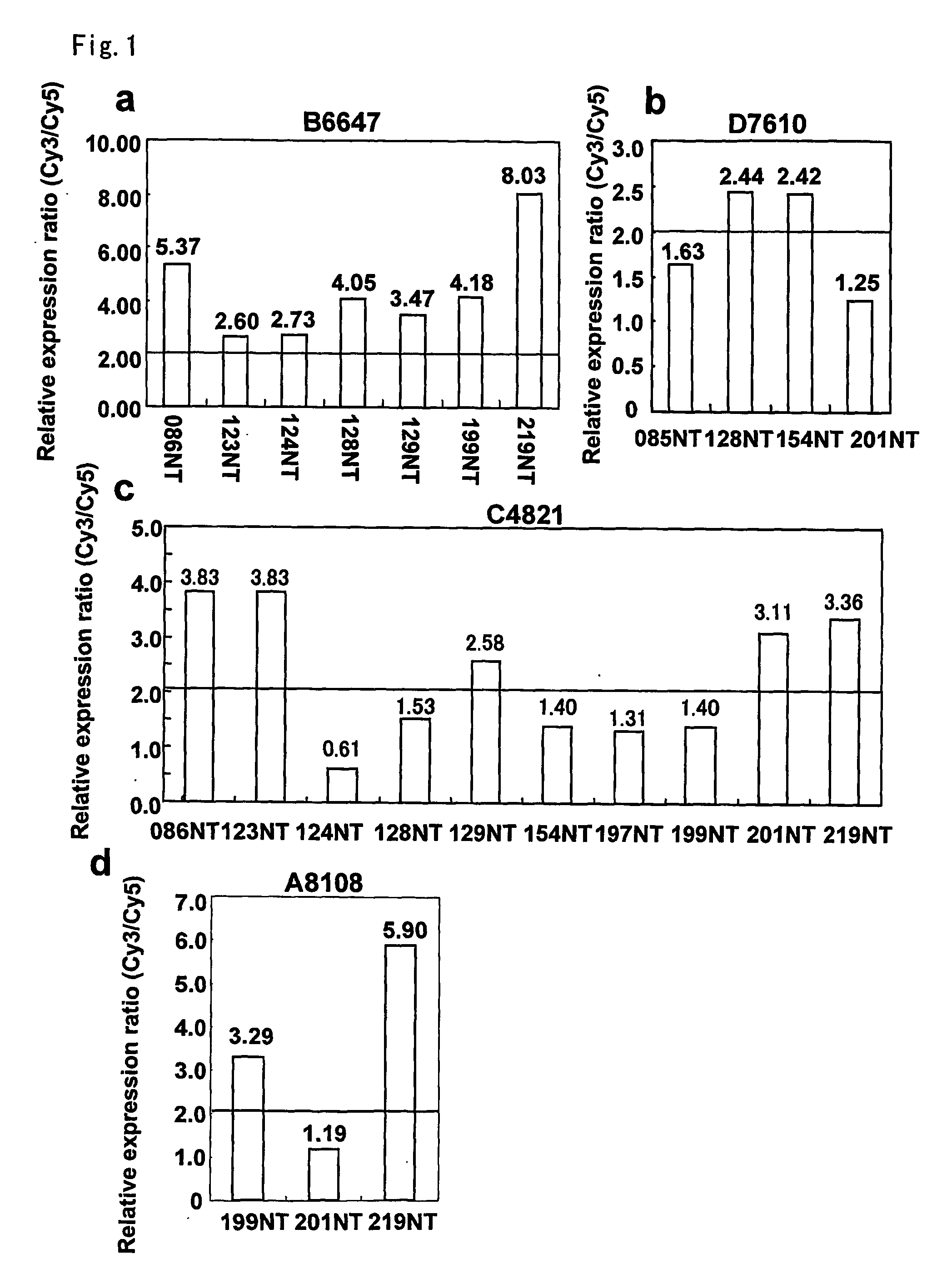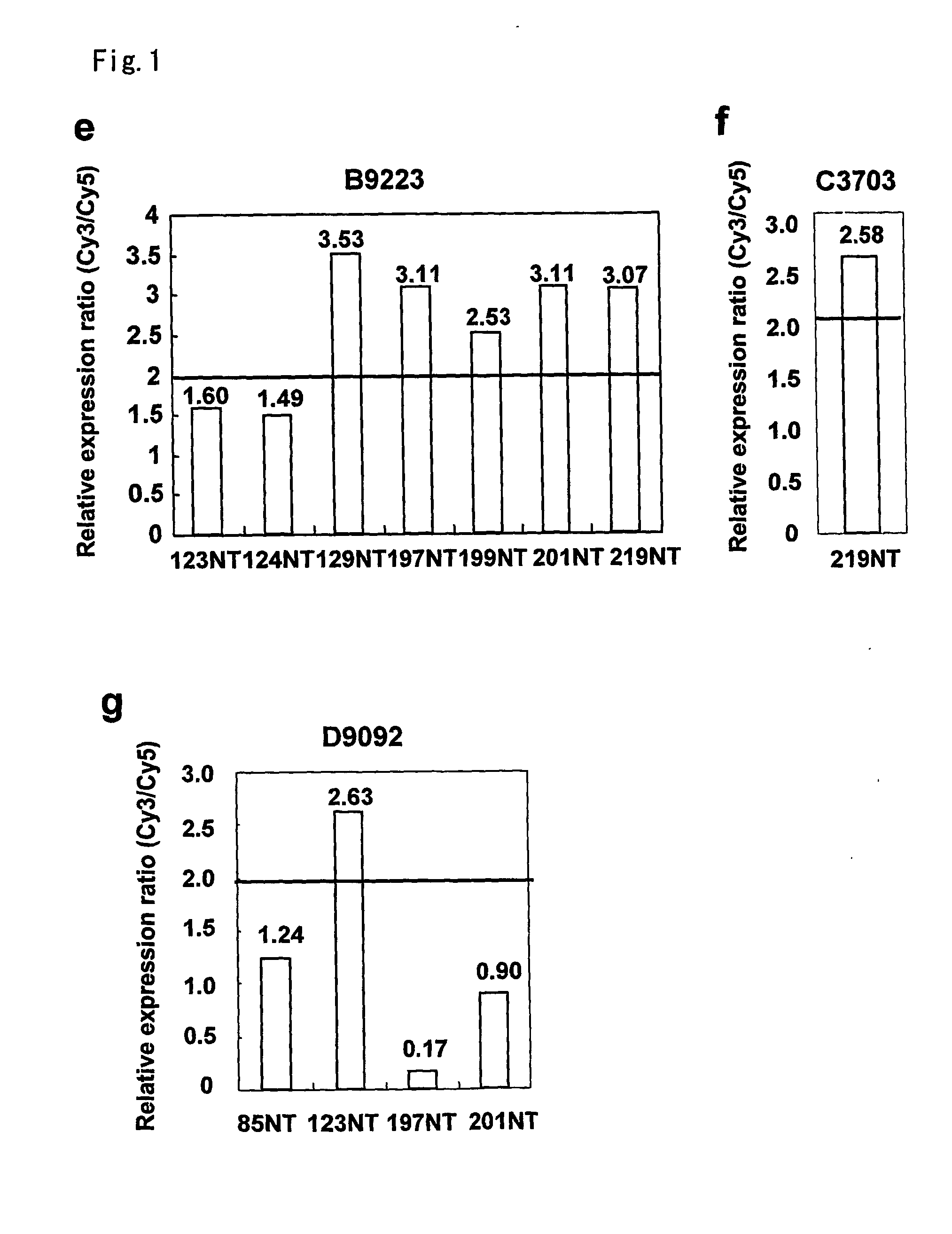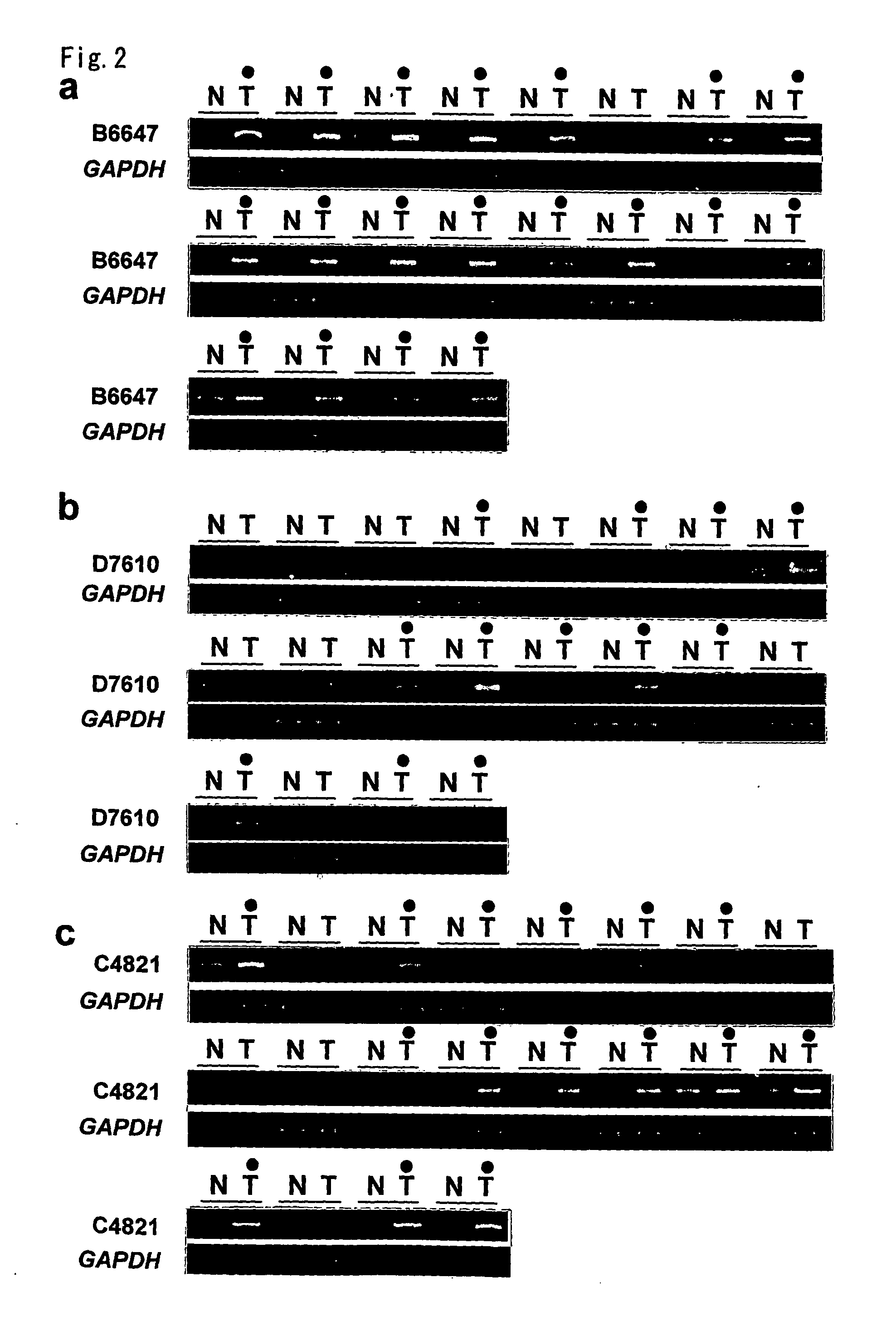Method of diagnosing colon and gastric cancers
a technology for gastric cancer and colon cancer, applied in the field of methods of diagnosing colon and gastric cancer, can solve the problems of cancer death worldwide and poor prognosis of patients with advanced cancers
- Summary
- Abstract
- Description
- Claims
- Application Information
AI Technical Summary
Benefits of technology
Problems solved by technology
Method used
Image
Examples
example 1
General Methods
[0273] Patients and tissue specimens. All colorectal and gastric cancer tissues and the corresponding non-cancerous tissues were obtained with informed consent from surgical specimens of patients who underwent surgery.
[0274] Genome-wide cDNA microarray. A genome-wide cDNA microarray with 23040 genes was used. Total RNA extracted from the microdissected tissue was treated with DNase I, amplified with Ampliscribe T7 Transcription Kit (Epicentre Technologies), and subsequently labeled during reverse transcription with Cy-dye (Amersham). RNA from non-cancerous tissue was labeled with Cy5 and RNA from tumor with Cy3. Hybridization, washing, and detection were carried out as described previously (4), and fluorescence intensity of Cy5 and Cy3 for each target spot was generated by ArrayVision software (Amersham Pharmacia). After subtraction of background signal, the duplicate values were averaged for each spot. Then, all fluorescence intensities on a slide were normalized t...
example 2
Identification of Genes Associated with Colon and Gastric Cancer
[0291] The expression profiles of 11 colon cancer tissues and their corresponding non-cancerous mucosal tissues of the colon using a cDNA microarray containing 23040 genes were analyzed. This analysis identified a number of genes expression levels of which were frequently elevated in the cancer tissues compared to their corresponding non-cancerous tissues. Among them, a gene with an in-house accession number of B6647 corresponding to an EST (KIAA1157), Hs. 21894 in UniGene cluster (http: / / www.ncbi.nlm.nih.gov / UniGene), was up-regulated in the cancer tissues compared to their corresponding non-cancerous mucosa in a magnification range between 2.60 and 8.03 in all seven cases that passed the cut-off filter (FIG. 1a). Expression levels of the second novel gene with an in-house accession number of D7610, corresponding to an EST (IMAGE4286524), Hs.351839 in UniGene cluster were enhanced in the cancer tissues compared to the...
example 3
Growth Suppression of Colon Cancer Cells trough the Decreased Expression of ARCHL1
[0292] Identification, expression, and structure of ARCL1. Homology searches with the sequence of B6647 in public databases using BLAST program in National Center for Biotechnology Information (http: / / www.ncbi.nlm.nih.gov / BLAST / ) identified ESTs including XM—051093 and a genomic sequence with GenBank accession number of NT-009711 assigned to chromosomal band 12q13.13. To determine the coding sequence of the gene, candidate-exon sequences were predicted in the genomic sequence using GENSCAN (http: / / genes.mit.edu / GENSCAN.html) and Gene Recognition and Assembly Internet Link (GLAIL, http: / / compbio.orn1.gov / Grail-1.3 / ) program and exon-connection experiments were performed. As a result, an assembled sequence of 6462 nucleotides was obtained containing an open reading frame of 1535 nucleotides encoding a putative 514-amino-acid protein (GenBank accession number AB084258), the gene was termed ARHCL1 (Ras ho...
PUM
| Property | Measurement | Unit |
|---|---|---|
| Fraction | aaaaa | aaaaa |
| Digital information | aaaaa | aaaaa |
| Biological properties | aaaaa | aaaaa |
Abstract
Description
Claims
Application Information
 Login to View More
Login to View More - R&D
- Intellectual Property
- Life Sciences
- Materials
- Tech Scout
- Unparalleled Data Quality
- Higher Quality Content
- 60% Fewer Hallucinations
Browse by: Latest US Patents, China's latest patents, Technical Efficacy Thesaurus, Application Domain, Technology Topic, Popular Technical Reports.
© 2025 PatSnap. All rights reserved.Legal|Privacy policy|Modern Slavery Act Transparency Statement|Sitemap|About US| Contact US: help@patsnap.com



